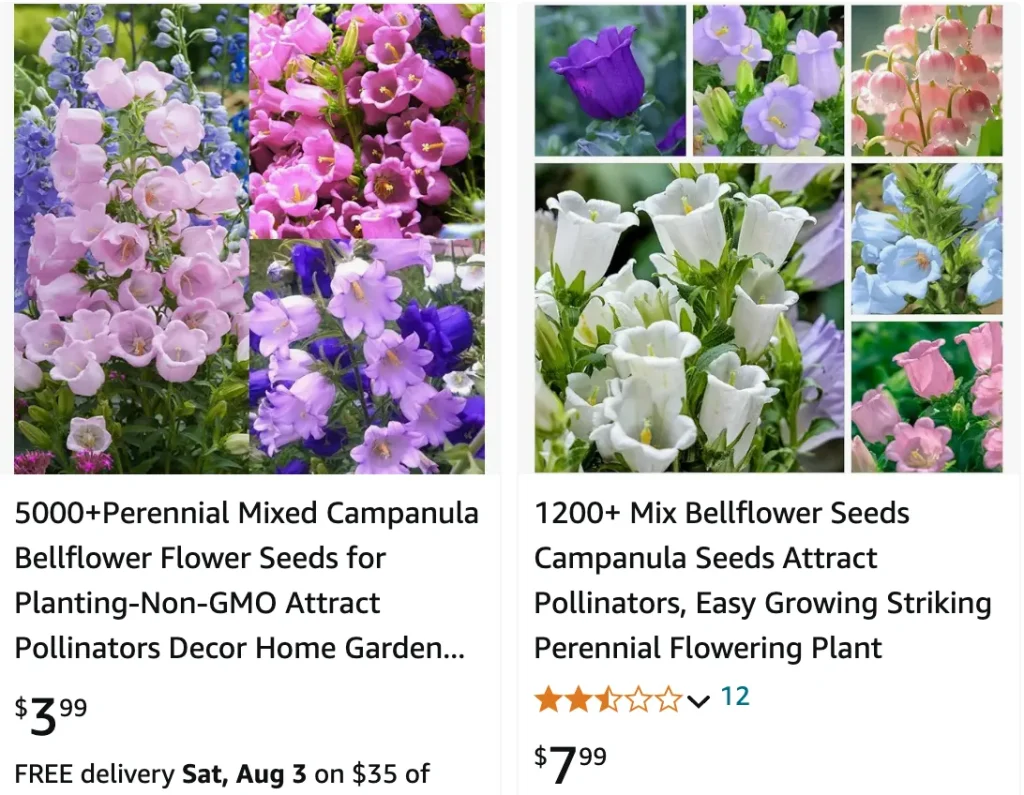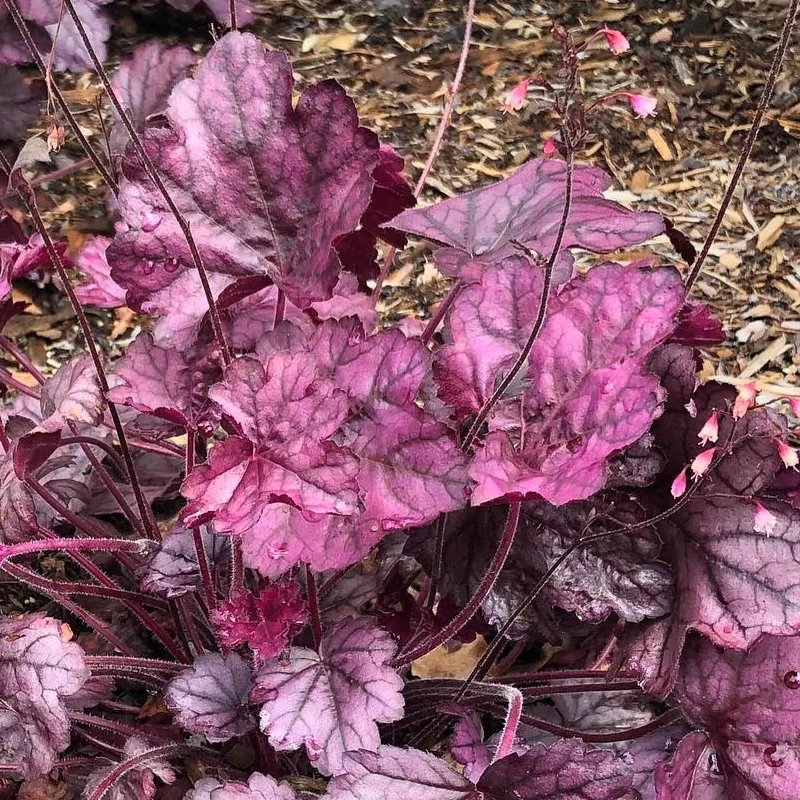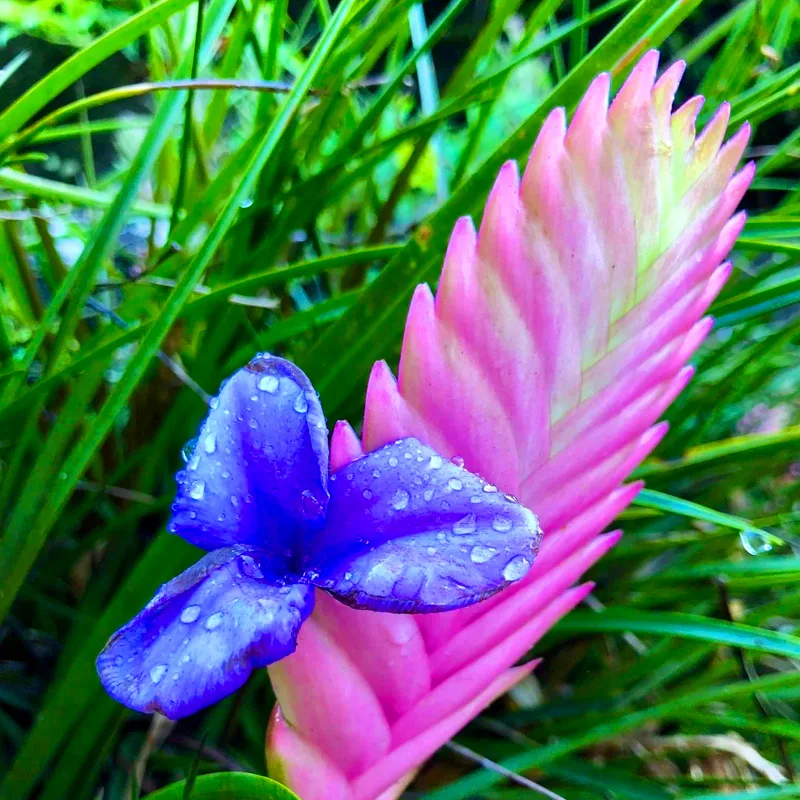
September 3 – Campanula
"Campanula, the bellflower, defines September 3."
Campanula symbolizes gratitude and humility. You approach life with appreciation and grace. Like its delicate bells, your charm is gentle yet unforgettable.
What Is Campanula?
Campanula, commonly known as bellflower, belongs to the Campanulaceae family. It includes over 400 species, ranging from low-growing ground covers to tall, upright varieties. The flowers are typically blue, purple, or white, and they attract pollinators like bees and butterflies to my garden.
Campanula species
- Campanula acutiloba Vatke
- Campanula adiyamanensis Yıldırım & Ş.Özcan
- Campanula afganica Pomel
- Campanula afra Cav.
- Campanula aghrica Kit Tan & Sorger
- Campanula aibgica Timukhin & Tuniyev
- Campanula aizoides Zaffran
- Campanula aizoon Boiss. & Spruner
- Campanula ajugifolia Sest. ex Spreng.
- Campanula akguelii Altan
- Campanula akhdarensis A.G.Mill. & Whitc.
- Campanula aktascii Aytaç & H.Duman
- Campanula alaskana (A.Gray) W.Wight ex J.P.Anderson
- Campanula alata Desf.
- Campanula albanica Witasek
- Campanula aldanensis Fed. & Karav.
- Campanula alisan-kilincii Yıldırım & Senol
- Campanula alliariifolia Willd.
- Campanula alpestris All.
- Campanula alphonsii Wall. ex A.DC.
- Campanula alpina Jacq.
- Campanula alsinoides Hook.f. & Thomson
- Campanula amasia Post
- Campanula anchusiflora Sm.
- Campanula andina Rupr.
- Campanula andrewsii A.DC.
- Campanula antalyensis Ayasligil & Kit Tan
- Campanula antilibanotica (P.H.Davis) Greuter & Burdet
- Campanula argentea Lam.
- Campanula argyrotricha Wall. ex A.DC.
- Campanula ariana Podlech
- Campanula aristata Wall.
- Campanula armena Steven
- Campanula arvatica Lag.
- Campanula asperuloides (Boiss. & Orph.) Harms
- Campanula atlantis Gattef., Maire & Weiller
- Campanula aureliana Bogdanovic, Resetnik, Brullo & Shuka
- Campanula aurita Greene
- Campanula austroadriatica D.Lakušic & Kovacic
- Campanula austroxinjiangensis Y.K.Yang, J.K.Wu & J.Z.Li
- Campanula autraniana Albov
- Campanula axillaris Boiss. & Balansa
- Campanula baborensis Quézel
- Campanula balfourii J.Wagner & Vierh.
- Campanula barbata L.
- Campanula baskilensis Behçet
- Campanula baumgartenii Becker
- Campanula bayerniana Rupr.
- Campanula bellidifolia Adams
- Campanula bertolae Colla
- Campanula betonicifolia Sm.
- Campanula betulifolia K.Koch
- Campanula bipinnatifida P.H.Davis
- Campanula bluemelii Halda
- Campanula bohemica Hruby
- Campanula bononiensis L.
- Campanula bordesiana Maire
- Campanula bornmuelleri Nábelek
- Campanula bravensis (Bolle) A.Chev.
- Campanula broussonetiana Schult.
- Campanula buseri Damboldt
- Campanula cabezudoi Cano-Maq. & Talavera
- Campanula calaminthifolia Lam.
- Campanula calcarata Sommier & Levier
- Campanula calcicola W.W.Sm.
- Campanula calycialata V.Randjel. & Zlatkovic
- Campanula camptoclada Boiss.
- Campanula cana Wall.
- Campanula candida A.DC.
- Campanula cantabrica Feer
- Campanula carnica Schiede ex Mert. & W.D.J.Koch
- Campanula carpatha Halácsy
- Campanula carpatica Jacq. Plant FAQs: Campanula Carpatica
- Campanula cashmeriana Royle
- Campanula caucasica M.Bieb.
- Campanula celsii A.DC.
- Campanula cenisia L.
- Campanula cervicaria L.
- Campanula cespitosa Scop.
- Campanula × chevalieri Sennen
- Campanula choruhensis Kit Tan & Sorger
- Campanula chrysosplenifolia Franch.
- Campanula cichoracea Sm.
- Campanula ciliata Steven
- Campanula cochleariifolia Lam.
- Campanula cochleromena Gardère
- Campanula collina Sims
- Campanula columnaris Contandr., Quézel & Zaffran
- Campanula comosiformis (Hayek & Janch.) Frajman & Schneew.
- Campanula conferta A.DC.
- Campanula constantini Beauverd & Topali
- Campanula coriacea P.H.Davis
- Campanula × cottia Beyer
- Campanula crassipes Heuff.
- Campanula cremnophila Bogdanovic, Resetnik, M.Jericevic, N.Jericevic & Brullo
- Campanula crenulata Franch.
- Campanula cretica (A.DC.) D.Dietr.
- Campanula creutzburgii Greuter
- Campanula crispa Lam.
- Campanula cymaea Phitos
- Campanula cymbalaria Sm.
- Campanula daghestanica Fomin
- Campanula damascena Labill.
- Campanula damboldtiana P.H.Davis & Sorger
- Campanula dasyantha M.Bieb.
- Campanula daucoides D.Lakusic, Skondric & Aleksic
- Campanula davisii Turrill
- Campanula decumbens A.DC.
- Campanula delicatula Boiss.
- Campanula demirsoyi Kandemir
- Campanula dersimensis Fırat & Yıldırım
- Campanula dichotoma L.
- Campanula dieckii Lange
- Campanula × digenea F.Wettst.
- Campanula dimitrii Strid
- Campanula dimorphantha Schweinf.
- Campanula divaricata Michx.
- Campanula dolomitica E.A.Busch
- Campanula drabifolia Sm.
- Campanula dulcis Decne.
- Campanula dzaaku Albov
- Campanula dzyschrica Kolak.
- Campanula edulis Forssk.
- Campanula ekimiana Güner
- Campanula elatines L.
- Campanula elatinoides Moretti
- Campanula engurensis Kharadze
- Campanula erinus L.
- Campanula euboica Phitos
- Campanula euclasta Boiss.
- Campanula eugeniae Fed.
- Campanula excisa Schleich. ex Murith
- Campanula expansa Rudolph
- Campanula fastigiata Dufour ex Schult.
- Campanula feijoana Gardère
- Campanula fenestrellata Feer
- Campanula ficarioides Timb.-Lagr.
- Campanula filicaulis Durieu
- Campanula flaccidula Vatke
- Campanula foliosa Ten.
- Campanula formanekiana Degen & Dörfl.
- Campanula forsythii (Arcang.) Bég.
- Campanula fragilis Cirillo
- Campanula fransinea Gardère
- Campanula fritschii Witasek
- Campanula fruticulosa (O.Schwarz & P.H.Davis) Damboldt
- Campanula gansuensis L.C.Wang & D.Y.Hong
- Campanula garciniae Pils
- Campanula garganica Ten.
- Campanula gentilis Kovanda
- Campanula giesekiana Vest ex Schult.
- Campanula gilliatii Milne-Redh. & Turrill
- Campanula × gisleri Brügger
- Campanula glomerata L. Plant FAQs: Campanula Glomerata
- Campanula × glomeratiformis Murr ex Dalla Torre & Sarnth.
- Campanula glomeratoides D.Y.Hong
- Campanula goulimyi Turrill
- Campanula gracillima Podlech
- Campanula grandis Fisch. & C.A.Mey.
- Campanula grossekii Heuff.
- Campanula guinochetii Quézel
- Campanula hacerae Ilçim
- Campanula hagielia Boiss.
- Campanula haradjanii Rech.f.
- Campanula hawkinsiana Hausskn. & Heldr.
- Campanula hedgei P.H.Davis
- Campanula hercegovina Degen & Fiala
- Campanula hermannii Rech.f.
- Campanula herminii Hoffmanns. & Link
- Campanula heterophylla L.
- Campanula hieracioides Kolak.
- Campanula hierapetrae Rech.f.
- Campanula hierosolymitana Boiss.
- Campanula hispanica Willk.
- Campanula hissarica Kamelin ex Rassulova
- Campanula hofmannii (Pantan.) Greuter & Burdet
- Campanula hongii Y.F.Deng
- Campanula humillima A.DC.
- Campanula hypopolia Trautv.
- Campanula iconia Phitos
- Campanula immodesta Lammers
- Campanula incanescens Boiss.
- Campanula incurva Aucher ex A.DC.
- Campanula intercedens Witasek
- Campanula involucrata Aucher ex A.DC.
- Campanula isaurica Contandr., Quézel & Pamukç.
- Campanula × iserana Kovanda
- Campanula isophylla Moretti
- Campanula jacobaea C.Sm. ex Webb
- Campanula jacquinii (Sieber) A.DC.
- Campanula jadvigae Kolak.
- Campanula jaubertiana Timb.-Lagr.
- Campanula jordanovii Ancev & Kovanda
- Campanula jurjurensis Pomel
- Campanula justiniana Witasek
- Campanula kachethica Kantsch.
- Campanula kamariana Kyriak., Liveri & Phitos
- Campanula kantschavelii Zagar.
- Campanula karabaghensis Mikheev
- Campanula karadjana Bocquet
- Campanula karakuschensis Grossh.
- Campanula kastellorizana Carlström
- Campanula keniensis Thulin
- Campanula kermanica (Rech.f., Aellen & Esfand.) Rech.f.
- Campanula khorasanica (Rech.f. & Aellen) Rech.f.
- Campanula kiharae Kitam.
- Campanula kirikkoleensis A.A.Donamez & Güner
- Campanula kladniana (Schur) Witasek
- Campanula kolakovskyi Kharadze
- Campanula kolenatiana C.A.Mey. ex Rupr.
- Campanula komarovii Maleev
- Campanula kotschyana A.DC.
- Campanula koyuncui H.Duman
- Campanula kurdistanica Advay & Maroofi
- Campanula laciniata L.
- Campanula lactiflora M.Bieb.
- Campanula lamondiae Rech.f.
- Campanula lanata Friv.
- Campanula lasiocarpa Cham.
- Campanula latifolia L.
- Campanula lavrensis (Tocl & Rohlena) Phitos
- Campanula lazica (Boiss. & Balansa) Kharadze
- Campanula leblebicii Yıldırım
- Campanula ledebouriana Trautv.
- Campanula lehmanniana Bunge
- Campanula leucantha Gilli
- Campanula leucoclada Boiss.
- Campanula leucosiphon Boiss. & Heldr.
- Campanula lezgina (Alex.) Kolak. & Serdyuk.
- Campanula lingulata Waldst. & Kit.
- Campanula litvinskajae Ogan.
- Campanula longisepala Podlech
- Campanula longistyla Fomin
- Campanula lourica Boiss.
- Campanula luristanica Freyn
- Campanula lusitanica Loefl.
- Campanula luzhijiangensis Huan C.Wang & T.T.Wang
- Campanula lycica Kit Tan & Sorger
- Campanula lyrata Lam.
- Campanula macrochlamys Boiss. & A.Huet
- Campanula macrorhiza J.Gay ex A.DC.
- Campanula macrostachya Waldst. & Kit. ex Willd.
- Campanula macrostyla Boiss. & Heldr.
- Campanula mairei Pau ex Maire
- Campanula malatyaensis Mutlu & Karakus
- Campanula marcenoi Brullo
- Campanula marchesettii Witasek
- Campanula mardinensis Bornm. & Sint.
- Campanula martinii F.Fen., Pistarino, Peruzzi & Cellin.
- Campanula massalskyi Fomin
- Campanula matritensis A.DC.
- Campanula medium L. Plant FAQs: Canterbury Bells – Campanula Medium
- Campanula mekongensis Diels ex C.Y.Wu
- Campanula merxmuelleri Phitos
- Campanula micrantha Bertol.
- Campanula microdonta Koidz.
- Campanula microphylloidea D.Y.Hong
- Campanula mirabilis Albov
- Campanula moesiaca Velen.
- Campanula mollis L.
- Campanula monodiana Maire
- Campanula montenegrina I.Jankovic & D.Lakusic
- Campanula monteverdensis Gardère
- Campanula moravica (Spitzn.) Kovanda
- Campanula morettiana Rchb.
- Campanula mugeana Yıldırım
- Campanula munzurensis P.H.Davis
- Campanula × murrii Dalla Torre & Sarnth.
- Campanula myrtifolia Boiss. & Heldr.
- Campanula nakaoi Kitam.
- Campanula nejceffii Marinov & Stoyanov
- Campanula nisyria Papatsou & Phitos
- Campanula numidica Durieu
- Campanula nuristanica Rech.f. & Schiman-Czeika
- Campanula occidentalis Y.Nyman
- Campanula odontosepala Boiss.
- Campanula oligosperma Damboldt
- Campanula olympica Boiss.
- Campanula omeiensis (Z.Y.Zhu) D.Y.Hong & Z.Yu Li
- Campanula orbelica Pančić
- Campanula oreadum Boiss. & Heldr.
- Campanula oreodoxa Arjmandi & Memariani
- Campanula orphanidea Boiss.
- Campanula ossetica M.Bieb.
- Campanula ovacikensis Yıld.
- Campanula pallida Wall.
- Campanula pamphylica (Contandr., Quézel & Pamukç.) Akçiçek & Vural
- Campanula pangea Hartvig
- Campanula papillosa Halácsy ex Maire & Petitm.
- Campanula paradoxa Kolak.
- Campanula parnassica Boiss. & Spruner
- Campanula parryi A.Gray
- Campanula patula L.
- Campanula pelia Hausskn. ex Bedd.
- Campanula pelviformis Lam.
- Campanula pendula M.Bieb.
- Campanula peregrina L.
- Campanula perpusilla A.DC.
- Campanula persepolitana Kotschy ex Boiss.
- Campanula persicifolia L. Plant FAQs: Campanula Persicifolia
- Campanula peshmenii Güner
- Campanula petiolata A.DC.
- Campanula petraea L.
- Campanula petrophila Rupr.
- Campanula phitosiana Yıldırım & Sentürk
- Campanula phrygia Jaub. & Spach
- Campanula phyctidocalyx Boiss. & Noë
- Campanula pichleri Vis.
- Campanula pinatzii Greuter & Phitos
- Campanula pindicola Aldén
- Campanula pinnatifida Hub.-Mor.
- Campanula piperi Howell
- Campanula podocarpa Boiss.
- Campanula pollinensis Podlech
- Campanula polyclada Rech.f. & Schiman-Czeika
- Campanula pontica Albov
- Campanula portenschlagiana Schult. Plant FAQs: Campanula Portenschlagiana
- Campanula poscharskyana Degen Plant FAQs: Campanula Poscharskyana
- Campanula postii (Boiss.) Harms
- Campanula praesignis Beck
- Campanula precatoria Timb.-Lagr.
- Campanula primulifolia Brot.
- Campanula propinqua Fisch. & C.A.Mey.
- Campanula pseudostenocodon Lacaita
- Campanula psilostachya Boiss. & Kotschy
- Campanula ptarmicifolia Lam.
- Campanula pterocaula Hausskn. ex Bornm.
- Campanula pubicalyx (P.H.Davis) Damboldt
- Campanula pulla L.
- Campanula pulvinaris Hausskn. & Bornm.
- Campanula punctata Lam. Plant FAQs: Campanula Punctata
- Campanula pyramidalis L.
- Campanula quercetorum Hub.-Mor. & C.Simon
- Campanula raddeana Trautv.
- Campanula radicosa Bory & Chaub.
- Campanula radula Fisch. ex Fenzl.
- Campanula raineri Perp.
- Campanula ramosissima Sm.
- Campanula rapunculoides L. Plant FAQs: Campanula Rapunculoides – Creeping Bellflower
- Campanula rapunculus L. Plant FAQs: Campanula Rapunculus – Rampion Bellflower
- Campanula rashtiana Parsa
- Campanula raveyi Boiss.
- Campanula reatina Lucchese
- Campanula rechingeri Phitos
- Campanula reiseri Halácsy
- Campanula retrorsa Labill.
- Campanula reuteriana Boiss. & Balansa
- Campanula rhodensis A.DC.
- Campanula rhomboidalis L.
- Campanula rigescens Pall. ex Schult.
- Campanula rimarum Boiss.
- Campanula robertsonii Gamble
- Campanula romanica Săvul.
- Campanula rosmarinifolia Kerr
- Campanula rotata D.Y.Hong
- Campanula rotundifolia L. Plant FAQs: Campanula Rotundifolia – Harebell
- Campanula rubasensis Teimurov & Taisumov
- Campanula rumeliana (Hampe) Vatke
- Campanula rupestris Sm.
- Campanula rupicola Boiss. & Spruner
- Campanula ruscinonensis Timb.-Lagr.
- Campanula sabatia De Not.
- Campanula samothracica (Degen) Greuter & Burdet
- Campanula saonissia Biel & Kit Tan
- Campanula sarmatica Ker Gawl.
- Campanula sartorii Boiss. & Heldr.
- Campanula sauvagei Quézel
- Campanula saxatilis L.
- Campanula saxifraga M.Bieb.
- Campanula saxifragoides Doum.
- Campanula saxonorum Gand.
- Campanula scabrella Engelm.
- Campanula scheuchzeri Vill.
- Campanula schimaniana Rech.f.
- Campanula sciathia Phitos
- Campanula sclerophylla (Kolak.) Ogan.
- Campanula sclerotricha Boiss.
- Campanula scoparia (Boiss. & Hausskn.) Damboldt
- Campanula scopelia Phitos
- Campanula scouleri Hook. ex A.DC.
- Campanula scutellata Griseb.
- Campanula secundiflora Vis. & Pancic
- Campanula × segusina Beyer
- Campanula semisecta Murb.
- Campanula seraglio Kit Tan & Sorger
- Campanula serhouchenensis Dobignard
- Campanula serrata (Kit. ex Schult.) Hendrych
- Campanula shetleri Heckard
- Campanula sibirica L.
- Campanula sidoniensis Boiss. & C.I.Blanche
- Campanula silifkeensis Tezcan & Öztekin
- Campanula simulans Carlström
- Campanula sivasica Kit Tan & Yıldız
- Campanula skanderbegii Bogdanovic, Brullo & D.Lakušic
- Campanula songutica Amirkh.
- Campanula sparsa Friv.
- Campanula spatulata Sm.
- Campanula speciosa Pourr.
- Campanula specularioides Coss.
- Campanula spicata L.
- Campanula × spryginii Saksonov & Tzvelev
- Campanula staintonii Rech.f. & Schiman-Czeika
- Campanula stellaris Boiss.
- Campanula stenocarpa Trautv. & C.A.Mey.
- Campanula stenocodon Boiss. & Reut.
- Campanula stenosiphon Boiss. & Heldr.
- Campanula stevenii M.Bieb.
- Campanula stricta L.
- Campanula strigillosa Boiss.
- Campanula strigosa Banks & Sol.
- Campanula suanetica Rupr.
- Campanula sulaimanii Nasir
- Campanula sulphurea Boiss.
- Campanula sylvatica Wall.
- Campanula tanfanii Podlech
- Campanula tatrae Borbás
- Campanula telephioides Boiss. & Hausskn.
- Campanula telmessi Hub.-Mor. & Phitos
- Campanula tenuissima Dunn
- Campanula teucrioides Boiss.
- Campanula teutana Bogdanovic & Brullo
- Campanula thyrsoides L.
- Campanula tokurii Ocak
- Campanula tomentosa Lam.
- Campanula tommasiniana K.Koch
- Campanula topaliana Beauverd
- Campanula trachelium L.
- Campanula trachyphylla Schott & Kotschy ex Boiss.
- Campanula transsilvanica Schur ex Andrae
- Campanula transtagana R.Fern.
- Campanula trichocalycina Ten.
- Campanula trichopoda Boiss.
- Campanula tridentata Schreb.
- Campanula tristis Kitam.
- Campanula troegerae Damboldt
- Campanula trojanensis Kovanda & Ancev
- Campanula × truedingeri Murr
- Campanula tschuktschorum Jurtzev & Fed.
- Campanula tubulosa Lam.
- Campanula tymphaea Hausskn.
- Campanula uyemurae (Kudô) Miyabe & Tatew.
- Campanula vaillantii Quézel
- Campanula vardariana Bocquet
- Campanula velata Pomel
- Campanula velebitica Borbás
- Campanula veneris Carlström
- Campanula versicolor Andrews
- Campanula vicinituba Gardère
- Campanula vidalii H.C.Watson
- Campanula waldsteiniana Schult.
- Campanula wanneri Rochel
- Campanula wattiana B.K.Nayar & Babu
- Campanula willkommii Witasek
- Campanula witasekiana Vierh.
- Campanula xylocarpa Kovanda
- Campanula yaltirikii H.Duman
- Campanula yildirimlii Kit Tan & Sorger
- Campanula yunnanensis D.Y.Hong
- Campanula zangezura (Lipsky) Kolak. & Serdyuk.
When to Plant Campanula Outside?
I typically plant Campanula outside in the early spring or late fall. These seasons provide cooler temperatures and adequate moisture, allowing the plants to establish roots before the extreme heat of summer or the freezing winter temperatures.
Is Campanula a Perennial?
Yes, Campanula is a perennial. This means it will come back year after year with proper care. In my garden, I’ve enjoyed watching my Campanula plants bloom beautifully each season, adding vibrant colors and attracting pollinators.
Does Campanula Spread?
Campanula can spread quite vigorously. Some varieties, especially the ground-cover types, spread rapidly and can fill a garden bed in a few seasons. I often have to thin out my Campanula to prevent it from overtaking other plants.
Is Campanula Deer Resistant?
Campanula is generally deer resistant. While no plant is entirely deer-proof, I’ve found that deer tend to avoid Campanula in favor of other more palatable plants in my garden. This makes it a great choice if you’re dealing with deer in your area.
Is Campanula Toxic to Cats?
No, Campanula is not toxic to cats. I have a couple of curious felines who love to explore the garden, and it’s reassuring to know that Campanula poses no threat to them.
How to Care for Campanula?
Caring for Campanula is relatively easy. It prefers well-drained soil and partial to full sun. Regular watering is crucial, especially during dry spells, but be careful not to overwater. I also apply a balanced fertilizer in the spring to encourage healthy growth and blooming.
How to Deadhead Campanula?
Deadheading Campanula is essential to promote continuous blooming. I simply snip off the spent flowers with a pair of garden scissors. This not only keeps the plant looking tidy but also encourages more flowers to bloom throughout the season.
Is Campanula Edible?
While Campanula isn’t typically grown for consumption, some species are edible. The leaves and flowers can be used in salads for a mild, sweet flavor. I’ve tried adding a few blossoms to my summer salads, and they add a lovely, decorative touch.
When Do Campanula Bloom?
Campanula typically blooms from late spring to early summer. However, with proper care and regular deadheading, you can often extend the blooming period. In my garden, I’ve enjoyed blossoms well into the fall.
Why Is My Campanula Dying?
If your Campanula is dying, it could be due to several factors: overwatering, underwatering, poor soil drainage, or pests. I always check the soil moisture and look for signs of pests like aphids. Adjusting the watering schedule and ensuring good soil drainage usually solves the problem.
How to Propagate Campanula?
Propagating Campanula can be done through division or seed. I’ve had success with both methods. For division, I dig up a mature plant in the spring or fall and separate it into smaller sections, then replant them. For seeds, I sow them indoors in late winter and transplant the seedlings outside after the last frost.
What to Plant with Campanula?
Campanula pairs well with a variety of plants. I like to plant it alongside roses, foxgloves, and delphiniums. The contrasting flower shapes and colors create a beautiful, harmonious display. Additionally, low-growing varieties make excellent ground covers around taller perennials.
Campanula vs Platycodon
Both Campanula and Platycodon, also known as balloon flower, are beautiful perennials with bell-shaped flowers. However, Platycodon blooms later in the season and has a distinctive balloon-like bud before it opens. In my experience, both plants are easy to care for, but Platycodon is less aggressive in spreading compared to some Campanula varieties.
How to Control Campanula Spread?
If you find Campanula spreading too aggressively, regular pruning and dividing can help manage its growth. I’ve also used barriers like garden edging to keep it confined to specific areas.
What Pests Affect Campanula?
While generally resilient, Campanula can occasionally suffer from pests like aphids, slugs, and snails. I use natural pest control methods, such as introducing ladybugs to deal with aphids and placing copper tape around the plants to deter slugs and snails.
Campanula is a versatile and charming plant that can enhance any garden. With proper care and a little attention, it rewards me with beautiful blooms year after year.
If i die, water my plants!



